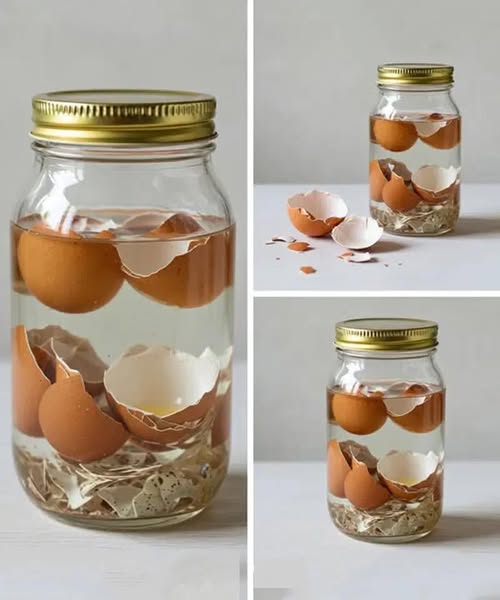Every day, millions of eggs are cracked for breakfast, baking, or cooking, and their nutrient-rich shells are tossed away without a second thought. But those fragile, chalky shells you’ve been discarding are actually one of nature’s most effective and eco-friendly gardening tools. With a simple method—soaking eggshells in hot water—you can unlock their hidden potential and give your plants a natural boost. When you soak eggshells in hot (but not boiling) water, several things happen.

The heat sanitizes the shells by killing lingering bacteria like salmonella, while minerals—especially calcium—begin to leach into the water, creating a nutrient-infused liquid that can be used to water plants. The shells also soften, making them easier to crush into a fine powder or small chips for later use. After soaking for 5–10 minutes, you’ll have two valuable products: clean shells ready for drying and crushing, and mineral-enriched water that works like a light calcium tonic for indoor or outdoor plants. Eggshells are made up of about 93% calcium carbonate, the same compound that strengthens plant cell walls and supports healthy root development.
They also contain small but important amounts of magnesium, potassium, phosphorus, and nitrogen, which are essential for strong, vibrant growth. Adding crushed shells to soil boosts calcium levels, helping to prevent problems like blossom-end rot in tomatoes, peppers, and squash. They also improve soil structure, aid drainage, balance pH by reducing acidity over time, and act as a natural pest deterrent against slugs and snails thanks to their sharp edges. Unlike synthetic fertilizers, eggshells release their nutrients slowly and naturally, posing no risk of “burning” your plants. To prepare eggshells for the garden, start by rinsing them after cracking to remove any egg residue.
Soak them in hot water for 5–10 minutes to sanitize and soften them. Then spread them on a towel or baking sheet to air-dry for 24–48 hours, or bake them at 200°F (95°C) for about 10 minutes to speed up the process. Once dry, place the shells in a ziplock bag or bowl and crush them with a rolling pin, mortar and pestle, or blender. For fertilizing soil, a fine powder is most effective, while small chips are perfect for mulch. There are several excellent ways to use eggshells in your garden.
First, mix them into soil as a natural fertilizer by sprinkling crushed shells into planting holes or mixing them into potting soil. This is especially helpful for calcium-loving plants such as tomatoes, peppers, broccoli, and roses. Second, use them as pest-repellent mulch by scattering crushed shells around the base of plants. The sharp edges deter slugs, snails, and cutworms without harming beneficial insects. Third, you can use whole shells as biodegradable seed-starting pots. Crack the top off an egg, rinse the shell, fill it with soil, and plant a seed. Once the seedling is ready, plant the whole shell directly in the garden, where it will break down naturally and enrich the soil.
When working with eggshells, there are a few important tips and warnings to keep in mind. Always clean and dry them thoroughly before use, as raw residue can attract pests or lead to mold growth. Crush them well—large pieces take much longer to break down and may not release nutrients for months. Avoid adding excessive amounts, as too many shells can raise soil pH to levels that are too alkaline for certain plants. Also, skip dyed or decorated shells from Easter eggs, since chemicals and dyes can harm your plants and soil.
That eggshell you’re about to throw away is far from trash—it’s a free source of calcium, a natural pest barrier, and an easy way to improve your soil’s health. By soaking, drying, and crushing your shells, you transform kitchen waste into a sustainable gardening resource that keeps on giving. The next time you make scrambled eggs or prepare a salad, don’t just toss the shells. Save them, prepare them, and let your plants enjoy the benefits. Some of the most effective gardening tools don’t come from a store—they come from your own kitchen, one egg at a time.





